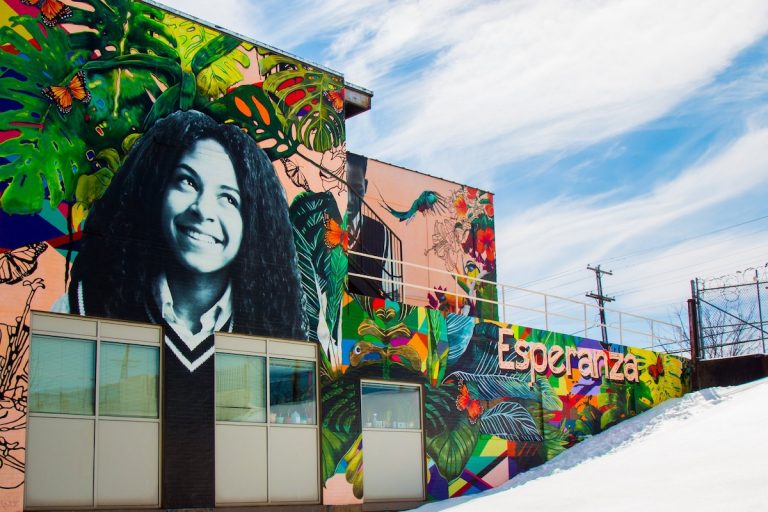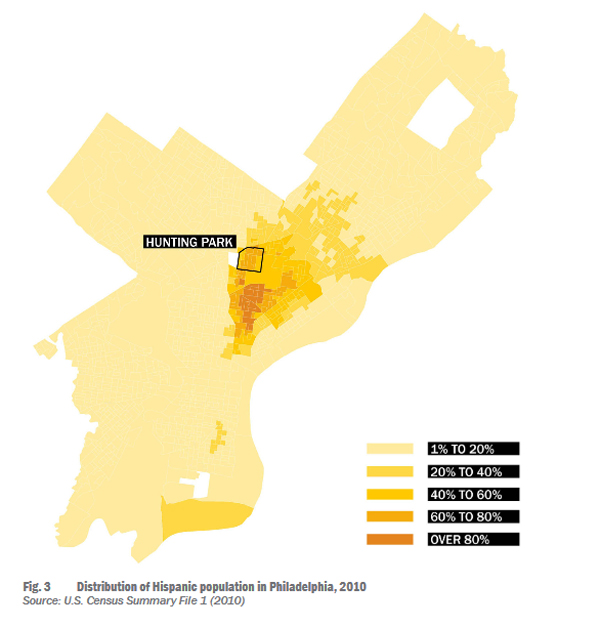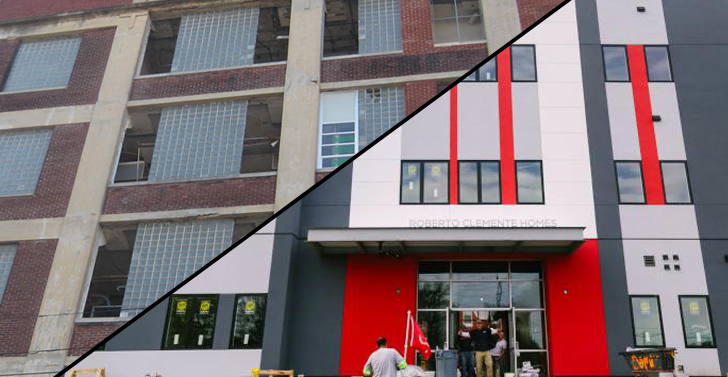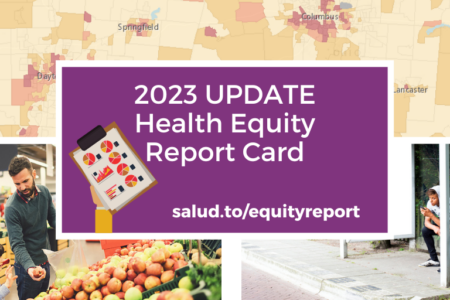
Share On Social!
Roberto Clemente Middle School shut its doors in 1994 and sat empty for more than 10 years years in Philadelphia’s Hunting Park, a predominantly Latino neighborhood.
Not anymore.
Local faith-based nonprofit Esperanza has turned the former school into 38 affordable housing units, which opened November 2018, Plan Philly reports.
The site also has 5,000 square feet of commercial space.
“It will now once again become a community asset, providing quality, affordable housing to Hunting Park residents,” said David Ortiz, Esperanza’s vice president of housing and economic development.
But the school-turned-affordable-housing project is just one part of Esperanza’s neighborhood revitalization plans.
Esperanza’s Revitalization of Hunting Park
 Hunting Park has higher poverty and school dropout rates than the state average, according to whyy.org.
Hunting Park has higher poverty and school dropout rates than the state average, according to whyy.org.
To help, Esperanza officials went to residents.
They knocked on doors, started a resident advisory committee, and held public meetings to get input on the best way to revitalize Hunting Park, according to whyy.org.
The result was a 10-year revitalization plan.
Esperanza’s approach is comprehensive with lots of asset-building in Hunting Park.
The organization is focused on four major areas—education, arts and culture, community economic development, and social change among Latino population. They operate schools, a legal clinic, and want to contribute to better future educational and economic outcomes for residents.
The Role of Housing and Homelessness in the Revitalization
Improving affordable housing infrastructure is a big key.
Esperanza helps with street cleanup, storefront improvement, and tree planting. They have a housing counseling program.
And they’re looking for properties to buy and convert into affordable housing, according to whyy.org.
“Renovating these spaces is a preventative step against developers building housing that’s not affordable for long-term residents, a root of gentrification,” which is when renovations lead to the displacement of current residents as more affluent residents move in, whyy.org reports. “It keeps the community in control of its own blocks.”
Another rising issue is homelessness in Hunting Park and Philadelphia.
Latinos make up nearly 15% of Philadelphia’s population and form its poorest minority group — 38 percent live in poverty, according to census data.
Yet nationally and in Philadelphia, Latinos represent a small fraction of 9% people in homeless shelters. Just 7% of vouchers from the Philadelphia Housing Authority went to Latinos.
Advocates say many Latinos don’t go to shelters because of language barriers and because the available beds are not near their neighborhoods. Few Latinos are visiting the intake centers, they often miss out on programs meant to help them in their own communities.
“We need a redefinition of homeless, and we need additional resources to help Latinos” City Council Member Maria Quinoñes-Sánchez told whyy.org in January 2019.
That’s why the Roberto Clemente Middle School project is so important.
The School-Turned-Housing Project
Esperanza acquired the Roberto Clemente Middle School property a few years ago.

The project is unique in many ways. Instead of being financed by a single developer, the transformation was underwritten by a number of state and local funders, according to Plan Philly.
“Esperanza worked with multiple partners on the project, including the Philadelphia Housing Authority and the city’s Office of Homeless Services, which will use four units for housing its clients,” according to Plan Philly. “All of the tenants will receive rental subsidies from the Philadelphia Housing Authority for years, adding up about $5 million in spending by the agency.
There is already a wait list of more than 400 families.
“This is a perfect example of when you’re going to repurpose and reuse, you provide people with a lot of dignity,” Quinoñes-Sánchez told Plan Philly.
See How Other Cities Are Encouraging Affordable Housing
Check out these stories about how cities and programs are finding unique ways to boost affordable housing for Latino and all people:
- Major steps toward Affordable housing in Austin, Texas
- The midterm Big Wins (and Losses) for Affordable housing
- San Antonio’s Daring New Polices for Affordable housing
Editor’s Note: main photo above is of Esperanza Academy Charter School’s mural via facebook.com/Esperanzausa and whyy.org.
Explore More:
HousingBy The Numbers
56.9
percent
of Latinos are "housing cost burdened"



